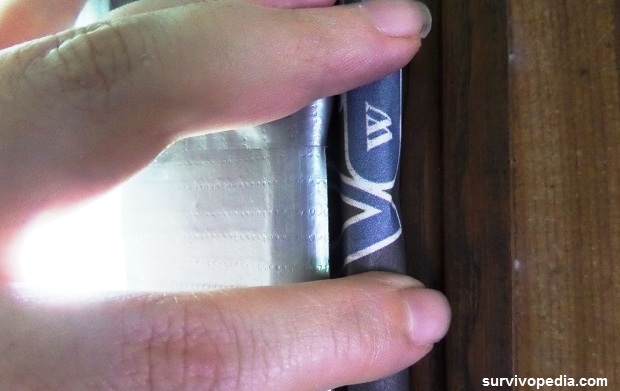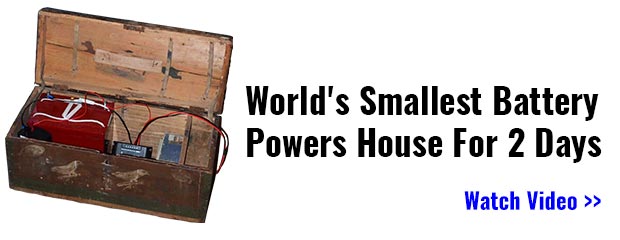Winterizing your apartment can be a chore even in the best of times, especially if you don’t want to complain to your landlord or create problems that will cost money if you move out.
On the other hand, dedicated apartment winterization products can be quite expensive.
If you are tired of high electric bills and drafty rooms, you can try these 20 inexpensive methods to winterize your apartment on a budget.
Find out Where the Drafts and Cold Spots Are
Before you start any winterization project, figure out where all the problem spots are. This will help you discover which areas need addressing so that you don’t waste time or money on areas that don’t require attention.
These simple tests can also be used to help you determine whether or not you were successful in deploying any given solution.
Drafts from the outside are likely to be the biggest cause of heat leaks in your apartment, so you will need to find out where they are so they won’t drain your heat out of the house and the money out of your pockets!
This smart device will help you slash an excess of 70% off your power bill overnight…
Start off by making sure all fans and incoming heat/cooling registers are closed off. Next, light some incense and walk around your apartment. Pay attention to areas where the smoke moves, as well as which direction it is going. Make notes on a sticky note and put them where attention is needed. You could also note each area in a notebook so that you can follow each one more easily.
Temperature and humidity levels vary from one part of a room to another, so it will be to your advantage to see exactly how these changes develop over time. You can purchase inexpensive battery powered thermometer/barometer units and place at least 5 or 6 in each room.
Observe the temperature and water vapor changes over time to get a better feel for the air currents and circulation in the room. As you seal off leaks or make other changes, see how this affects the temperature and water vapor in each area.
Replace Energy Efficient Bulbs With Incandescent Bulbs
Even though incandescent bulbs require more electricity, they also release a good bit of heat. Therefore, when you use these bulbs at night, they will give you light, and also increase the temperature in the room.
If you cannot seal up a particular draft, the heat from the lamp will also result in warmer air being pushed inward instead of cold.
Remove Lamp Shades
When using incandescent light bulbs, it never hurts to remove the lamp shade. This will allow heat to escape all the way around the bulb and release it into the rest of the room faster.
Use Plastic Bags to Create Wall Hangings
Chances are, you have already heard about wall rugs or other fabric wall hangings that will cut off drafts from the outer walls. Unfortunately, even less than attractive wall hangings can be a bit expensive. To add insult to injury, if they are too heavy, you may not be able to install them without ruining the wall.
Rather than purchase pre-made wall hangings, you can use rope or “yarn” made from plastic shopping bags, and then braid that into mats, as the plastic will still trap cold air and act as an insulator. Just make sure you keep the wall hangings far enough away from lamps or other potential sources of heat, and also from light and power sockets that may emit sparks.
Cover Floors With Rag Rugs
If your apartment is on the first floor or in the basement, a good bit of cold may be coming up through the floor. While it is possible to find area rugs at a reasonable price, you can also make a heavy rug from old rags. Just cut the rags into strips and braid them, much as you would braid plastic bags for wall hangings.
Needless to say, if you are on the second floor or higher, it may actually be a bad idea to have rugs or floor insulators. As long as your downstairs neighbor is using heat in the apartment below, it may suit your needs to simply let it rise up through the floor boards.
World’s Smallest Battery Will Power Your House For More Than 2 Days!
That being said, you will still need to evaluate the impact of crawl spaces that may have air leaks from outside the building. Incense testing and thermometers will give you more information to work with.
Make Sure Heating Ducts and Registers are Clean
Dust and debris will always accumulate in central heating ducts. You can still try to eliminate some of the blockage by reaching down as far as you can to vacuum out any dust you can reach.
In a similar fashion, if the fins on heat registers are bent or warped, it is time to replace them. These fins help transmit heat, but they will be inefficient if they are bent or ruined.
Use Heavy Drapes or Curtains at Night
Since windows tend to be one of the biggest problems in the winter months, you will need to block them off and insulate them as much as possible during the evening hours. Use drapes, heavy curtains, or anything else that will block off as much air flow as possible.
Choose white or light colors because they do not absorb heat, so it will stay in the room. If you can’t afford heavy drapes, fill a trash bag with smaller shopping bags and fit it into the window.
Insulate the Ceiling
Regardless of the floor you live on, insulating the ceiling is very important because warm air always moves upward. Rather than let the heat escape, you can use foam insulating sheets or even tape plastic bags to the ceiling.
Just make sure no flammable material is near lamp fixtures, fans, or air registers.
Use Tin Foil to Keep Heat In
If you are using incandescent light bulbs, try putting some tin foil behind them. This will reflect more light and heat back into the room. Tin foil can also be used on walls near windows to help redirect light and heat into the room.
Simply put the tin foil up in areas where you see light hitting the wall.
Reverse the Direction of Your Ceiling Fan
During the summer months, ceiling fans will pull warm air upward and away from your living area. When you reverse the direction of the fan, warm air that has been rising will be pushed back down.
Just keep the fan set to low for the best effect.
Let the Sun in During Daylight Hours
If you pay attention to the movement of the sun around your apartment, you will see that there are times when a good bit of sun flows into each window. Open the curtains or drapes during these hours, and you will get a good bit of heat at no extra cost.
Don’t forget to shut the drapes when the sun moves out of an optimal position.
It is also possible to store some of the heat from the sun so that you can use it later on. Simply put hot water bottles or bricks on the windowsill at peak light hours. Even if the bricks or bottles only get a bit warm, they can still be carried to other parts of the apartment to cool off and release heat into the area.
Use Fireproof Material to Insulate Electric Outlets
As you test for air leaks in your apartment, you may be surprised to find some fairly large ones around electrical outlets and wall switches. Contrary to popular belief, there is something you can do to insulate these areas.
Most hardware stores sell fireproof insulating material that you can use safely around electricity boxes. Just remove the plastic face plate and follow the directions on the package.
Do not forget to throw the circuit breaker or pull the fuses so that no current is flowing through the box while you are working.
Increase or Maintain Water Vapor in the Air
When you increase heat in the air, it drives away moisture. Aside from making your apartment uncomfortably dry, the lack of moisture also reduces the capacity of the air to retain heat. Keep tubs of water near heating vents or near fans to increase the water vapor.
You can check on the results with barometer thermometer combos to see if cold spots improve from the addition of this water vapor.
Stop Air Drafts Around Doors
Next to windows, your biggest problems will come from doors. Air leaks can be stopped with folded up paper that you can remove and replace as needed. If you have especially large leaks under the door itself, you can use towels or rags to create a door “snake”.
Simply wedge the fabric under the door to keep warm air from escaping.
Place a Screen or Other Barrier Behind Doors
Doors can also be complicated because of the hinges. Since there can be a good bit of air space in this area and leaky molding, it will be to your advantage to find some way to block off these drafts.
If you cannot use caulking or other theorization aides, it may still be possible to place a screen or other barrier just inside the doorway. Just angle it so that the cold air cannot get as far into the room or move as quickly. Even though these screens will not completely cut off the draft, they will keep more of the cold in one area.
Insulate Windows With Plastic
There are many ways to insulate windows with plastic. First, you can use the pre-manufactured kits that make use of hair dryers to form-fit the plastic to your windows. You can also make window covers from clear vinyl, wood, and felt.

If the molding is very new, or you don’t want to disrupt it, then simply use masking tape to hold the plastic in place. Use wood spaces under curtain rods to create an airtight seal that won’t leave marks on the molding or walls.
Use Foam or Caulking to Seal Window Cracks
Over the years, more than a few tenants have found themselves wishing they could caulk up an air leak in a window or door. At the same time, dealing with a landlord that doesn’t want this kind of work done by the tenant can create all kinds of problems.
Today, there are all kind of non-permanent foam and caulk products that can be used for this purpose. Just try them on a hidden area to make sure you can apply and remove the material easily.
Once you are certain you understand how the product works, you can go ahead and seal off all the cracks and problem areas. Later on, if you decide to move, all you have to do is take down the foam or caulk before leaving.
Make Sure Storm Windows and Doors are Closed
As simple as it may sound, you may not even realize that your screen windows have a second pane of glass that can be lowered over the screen during the winter months. If you do notice a second pane of glass, simply lower it into place to create an airspace between the inner window pane and the storm window.
Check on your storm door to see if it also has a pane of glass that can be lowered. It should be noted that lowering storm windows will help some, but will not cut off all drafts from windows and doors.
Loose molding, worn window tracks, and lost insulation between the window and the wall will still let heat escape. These issues will also have to be addressed by other means such as using caulk, plastic covering or wall hangings.
Run a Box Fan by Vents and Electric Heaters
Once you have a good sense of the air flow around each room in your apartment, you are bound to realize that most of the heat from air registers and radiators won’t go very far from the source. On the other hand, even using a box fan on a low setting will pull the air much further into the room without requiring more heating effort.
Set the fan up so that the motor side of the fan is facing the air register. In this orientation, the fan will be pulling warm air forward into the room as it is released from the register. You should feel a warm breeze in any direction that you point the fan.
Do not forget to allow enough room for the fan motor to have plenty of ventilation and access to cooler air. Even though the heat registers will not produce enough heat buildup to start a fire, a fan motor can produce a good bit of heat while it is running. It is best to leave a little bit of space in order to further extend the life of the motor.
If you are using an electric heater, you can cut down as much as 1/3 off the heater usage by putting a fan behind the heater. Just make sure the fan is pushing air from behind the heater and into the area that you want to warm up. High to medium settings can also be used on colder days and nights to create a warm draft instead of a cold one.
Use a Good Quality Filter on Furnace Inlets
Depending on where your apartment is located, you may have an inlet in your room that takes air into the furnace. Even though your landlord may supply the filter for this vent, it never hurts to see what kind is installed.
Since this vent is the main source of dust entry into the central heating system, it may be to your advantage to use a better filter. This will reduce the amount of clogging in the system that ultimately reduces the air flow in the registers.
Most, if not all air handler systems can handle at least a Merv 10 filter. By contrast, most of the blue fiberglass filters are, at best, a Merv 4 or 5.
If you have problems with odors in the apartment, see if you can get permission to install a Merv 9 filter with activated carbon in it. In most cases, your landlord will probably change the filter every three months. This is one place where you may need to ask permission to make a small change as part of your winterization plans.
You can winterize your apartment without spending a fortune or asking your landlord to make dozens of changes. In most cases, you can do these tasks in just a few minutes, or develop a new and rewarding hobby. And the best thing is, that it will save your budget too!
This article has been written by Carmela Tyrell for Survivopedia.






















































































In our case, the duct work had come apart in two areas and most of the heat was warming the crawl space. All it took was a roll of aluminum tape to put it Back together. Parts of the house are now 5-12 degrees warmer.
I often download these documents as PDFs to read at a later date. When I tried to do that with this one, by clicking on the “Download as PDF” link, it took me to a page with a “Please do not leech.” message instead. Disappointing, really. Why have a “Download as PDF” link if you consider that leaching?